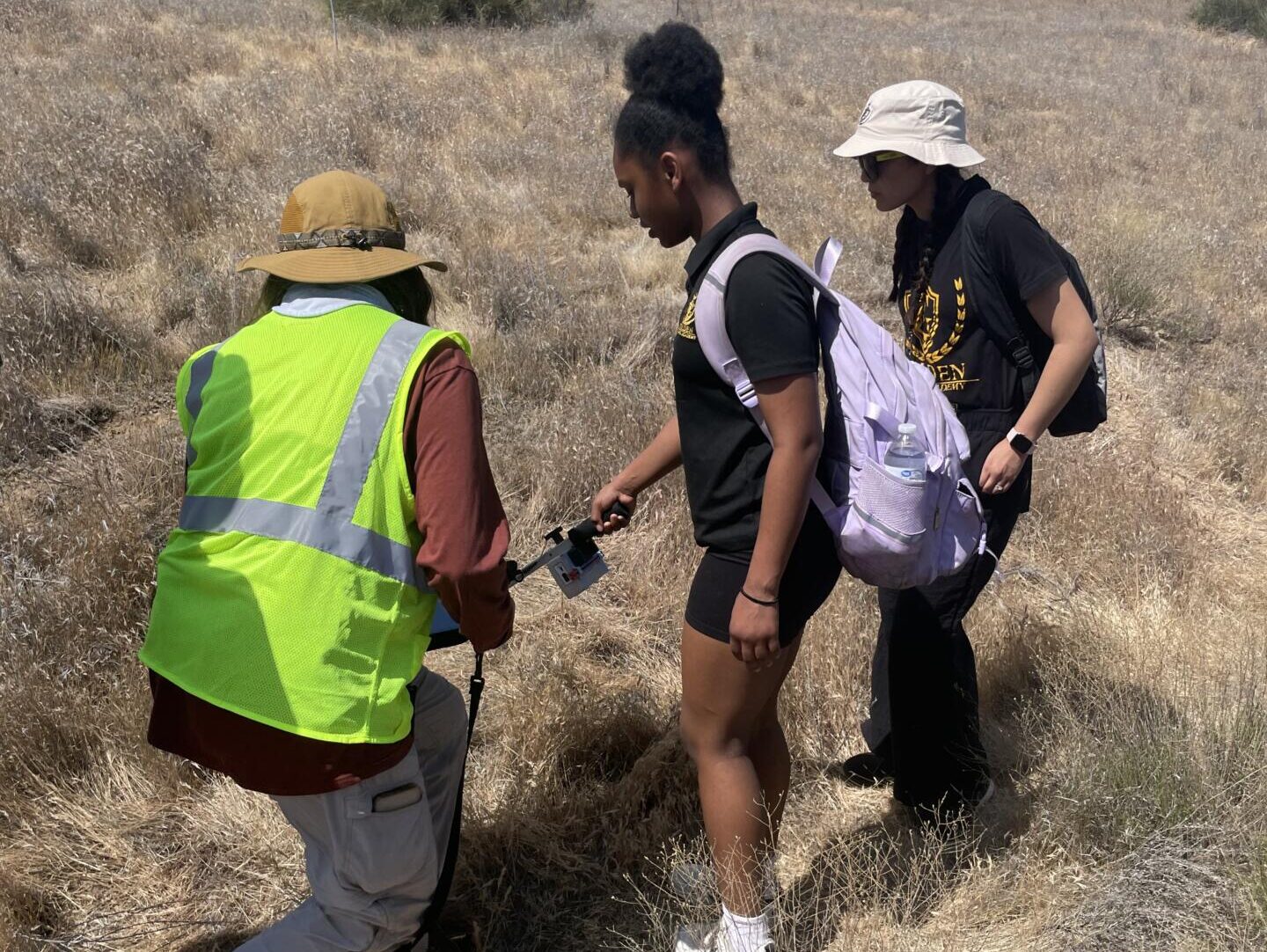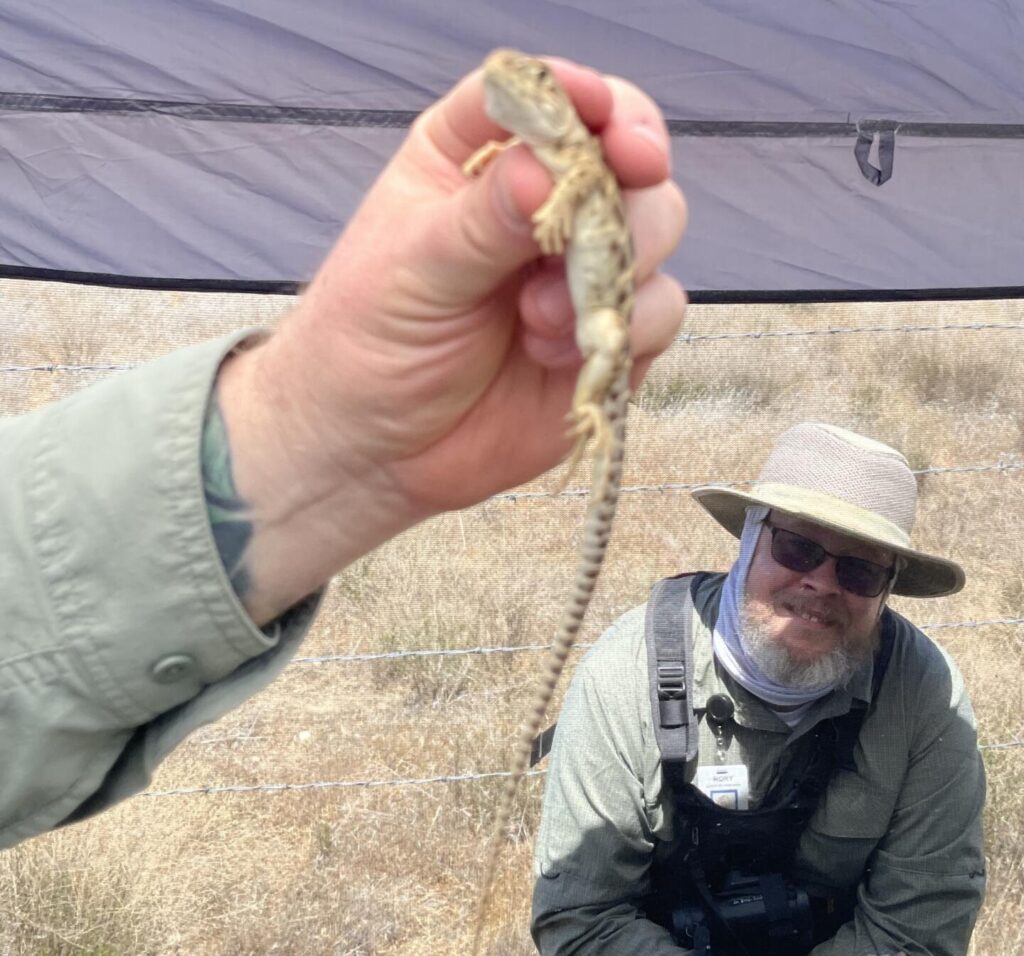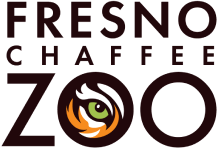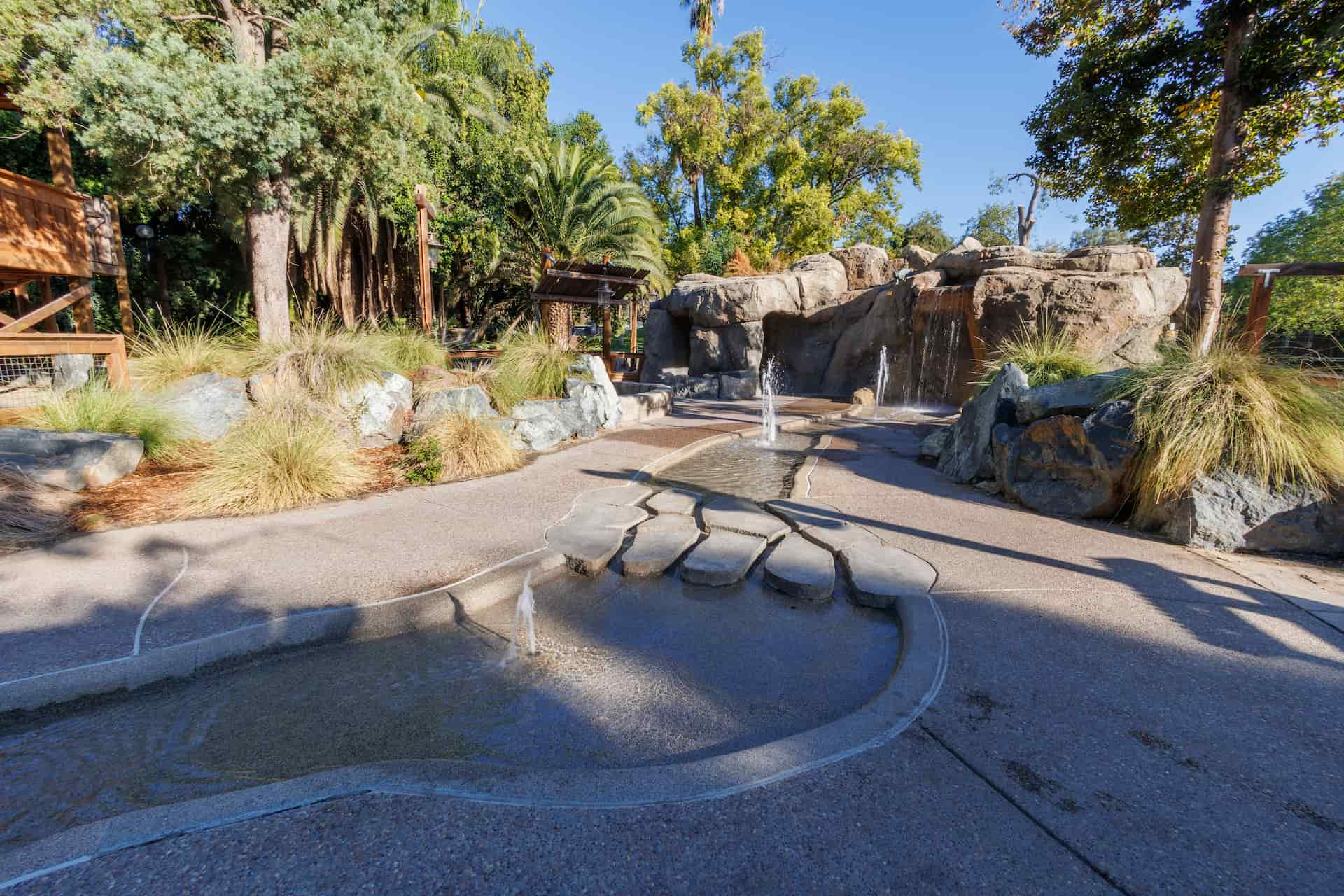
Here at Fresno Chaffee Zoo we are always looking for new ways to inspire young people to care about the planet and to feel a part of the future of science and animal conservation. This May, the Education Program Team had a great opportunity to partner with the Conservation Science Team to do just that. We brought 50 students from our partner school, Golden Charter Academy, to the Panoche Hills field site. The students learned from our team of scientists about Blunt-nosed Leopard Lizards and what we are doing to restore their population and habitat.
This experience took a lot of pre-planning teamwork and a leap of faith. Could we get 50 students on a charter bus up the hill? Would it be too hot/cold? Would the students be impressed with the area and the work? All the planning paid off and the students had an incredible immersive experience. The Education staff led them on nature walks, a plant identification activity, and nature journaling. Students learned firsthand about the burrows and dens the lizards and other desert animals use for shelter, and what plants were native and which were not. They thought about how invasive plants might harm the lizards homes. They then went up the hill to track the Blunt-nosed Leopard Lizards with Zoo scientists.

Small groups of students used telemetry devises to find burrows that had lizards living within them. The telemetry units track the lizards that the FCZ scientists tagged in previous years. Students excitement grew as they saw they could find the entrance to the homes and track the lizards under the ground. I got to take the students from one area to the other. I asked them what they learned and what it was like being a scientist. They shared with me the names of plants they had just seen and how to tell an active burrow from an inactive one. To the question “what does it take to be a scientist?”-One student said “It takes a lot of patience”. It was a great day of learning about conservation science.
Thank you to the educators who brought this program to fruition: Jake, Amber, Doug, Jenna, and Zac. Thank you to all our FCZ Scientists Dr. Rory, Dr. Steve, Steve S, Em, and Beka.

